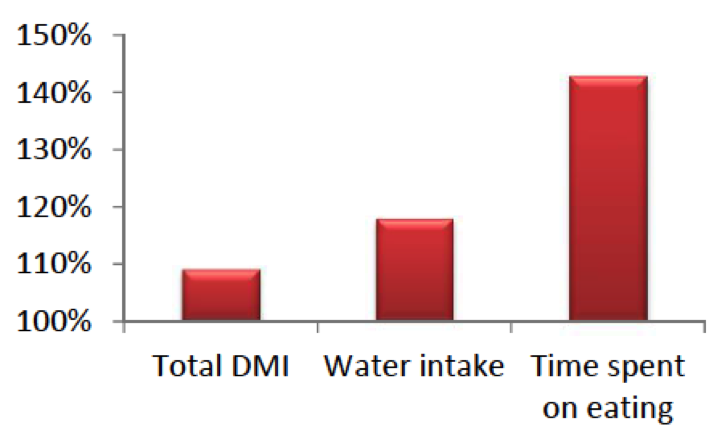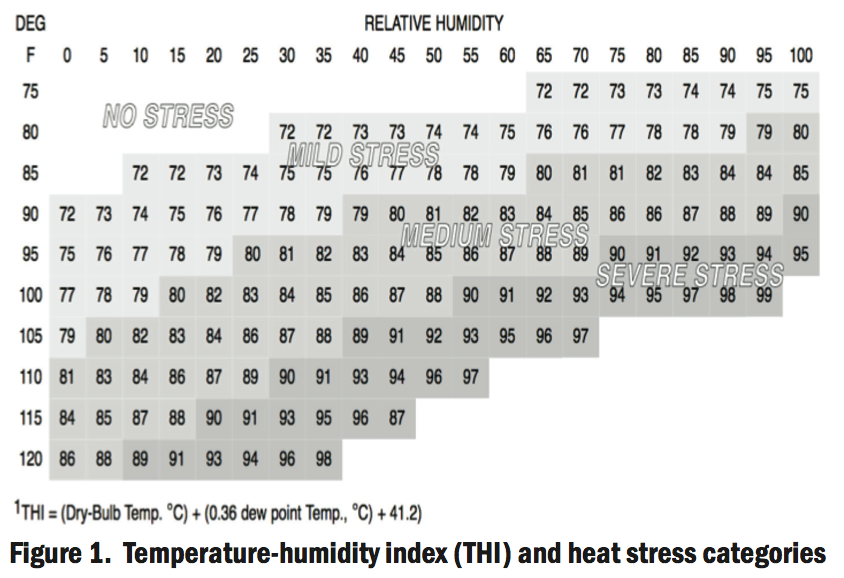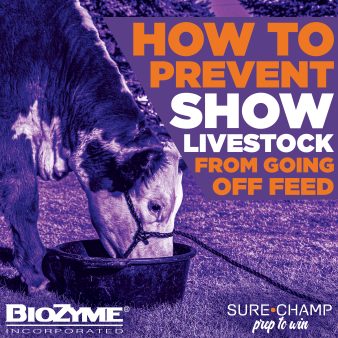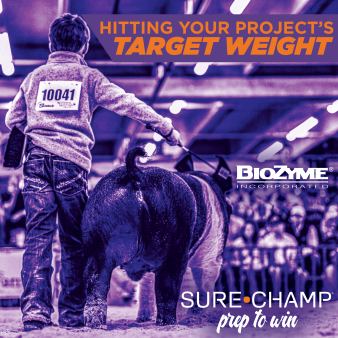by Kevin Glaubius, VitaFerm® Director of Nutrition and Technical Sales Support
Heat stress impacts the performance of cattle with millions of dollars of annual economic losses. Animal responses to heat stress include reduced dry matter intake, decreased average daily gain, decreased milk yield, decreased fertility and poor reproduction.
As Figure 1 reflects, the degree of heat stress is commonly estimated by temperature-humidity indexes. Some have hypothesized that it is not just the extent of heat stress alone that affects animals, but also the duration of the heat stress. This is supported by anecdotal evidence from the field, where it is often observed that adequate night cooling reduces the impact of heat stress during multiple-day periods of high temperature and humidity.
It is also hypothesized that cattle will begin to experience heat stress at different levels depending on their stage of production. For example, in growing steers the threshold is considered to be a THI of 84, whereas in a high-producing, lactating dairy cow the threshold will be considerably lower, starting at a THI of 70. At the same ambient temperature, a higher-producing dairy cow will have to dissipate more heat to the environment than a lower-producing cow of the same size.

Feeding Amaferm® is a prebiotic designed to enhance digestibility by amplifying the nutrient supply for maximum performance. It is research-proven to increase intake, digestion and absorption. The improved digestibility observed with Amaferm feeding provides more energy to the animal during heat stress when intake is reduced.
Last year, we launched VitaFerm® HEAT a mineral specifically designed to help cattle combat heat stress and the negative effects of fescue pastures. In addition to Amaferm, VitaFerm HEAT contains the pepper extract Capsaicin. Capsaicin acts a vasodilator that expands blood vessels allowing heat to dissipate from the body more quickly. As an added bonus, VitaFerm HEAT also contains garlic, to deter insects.



